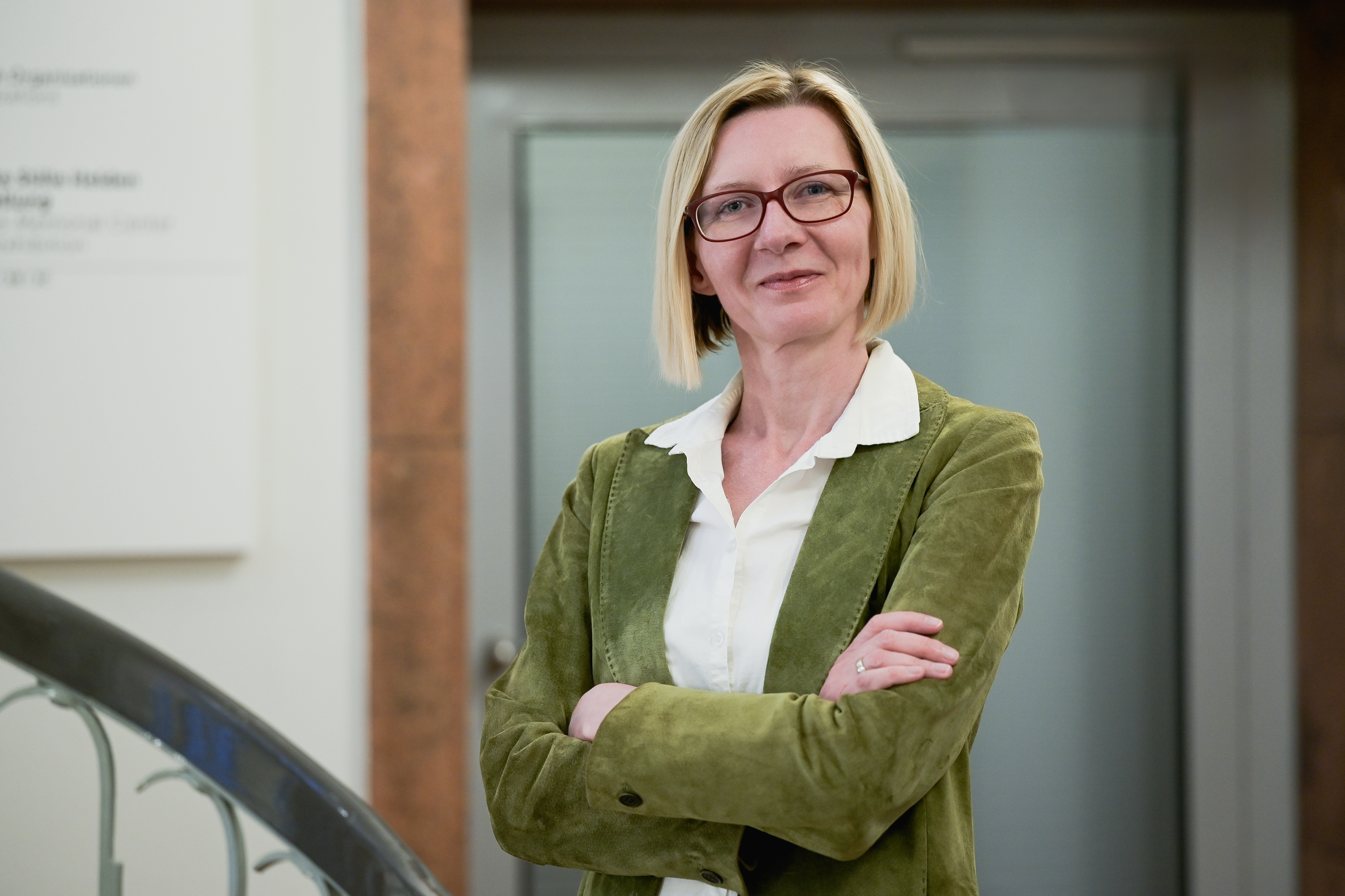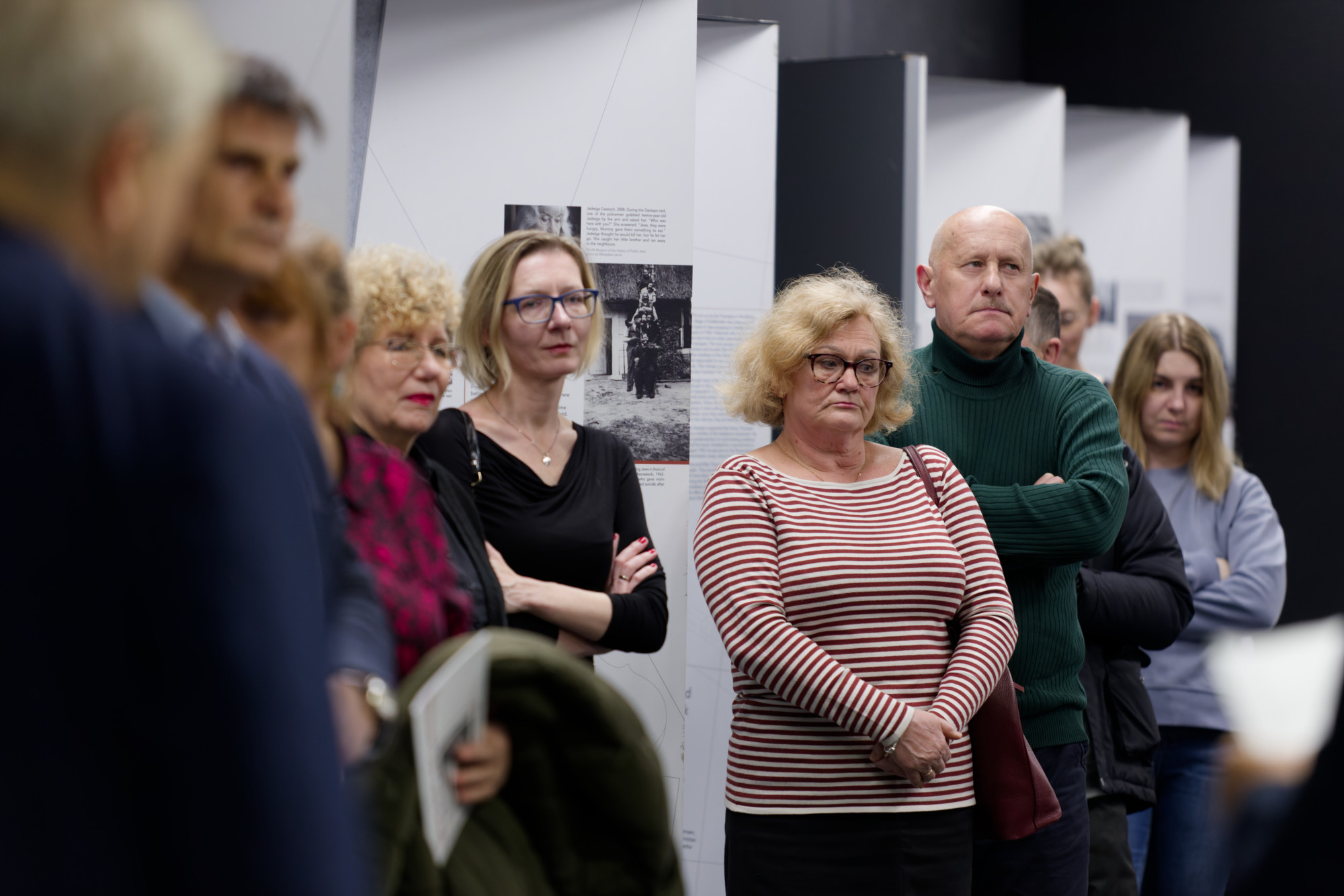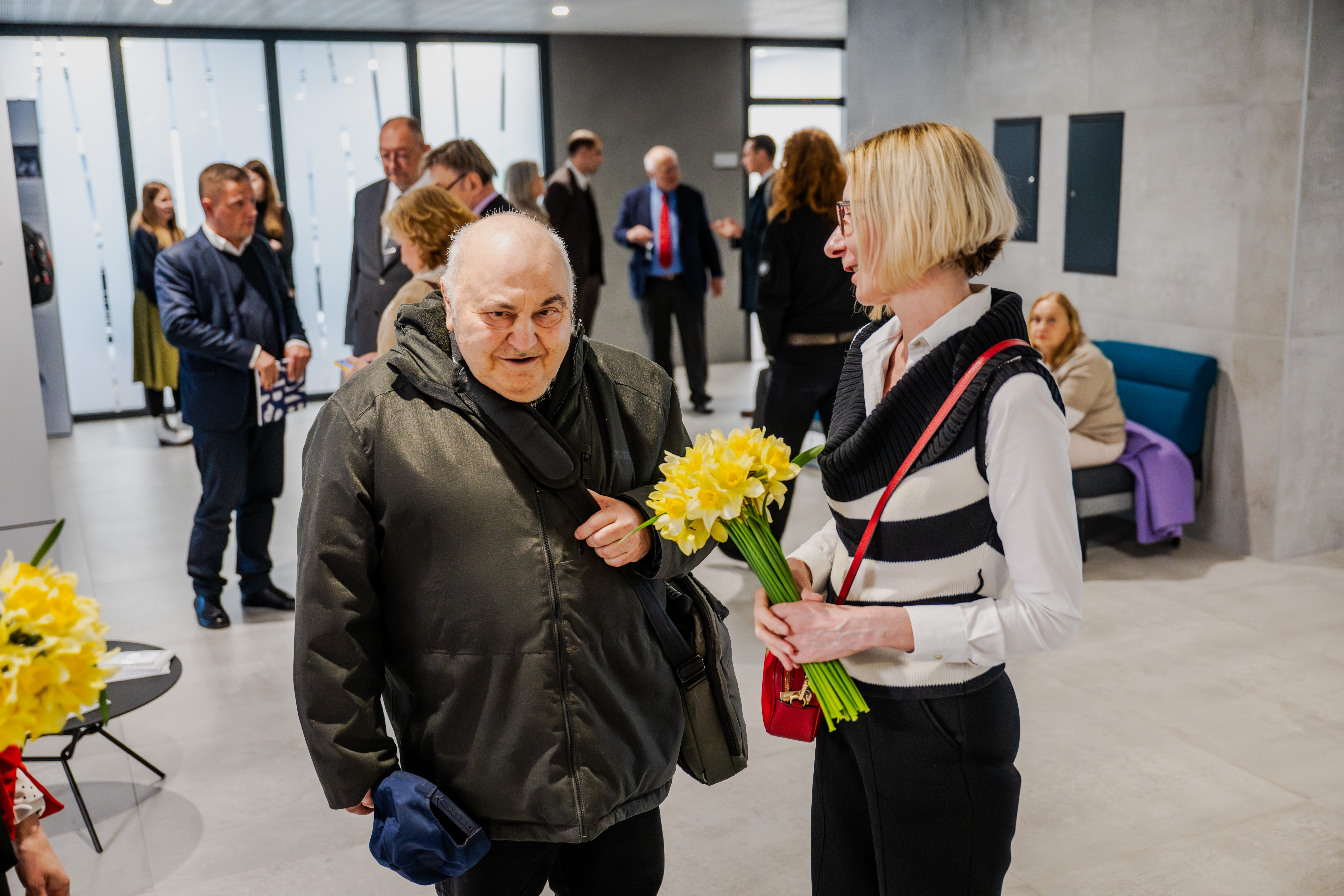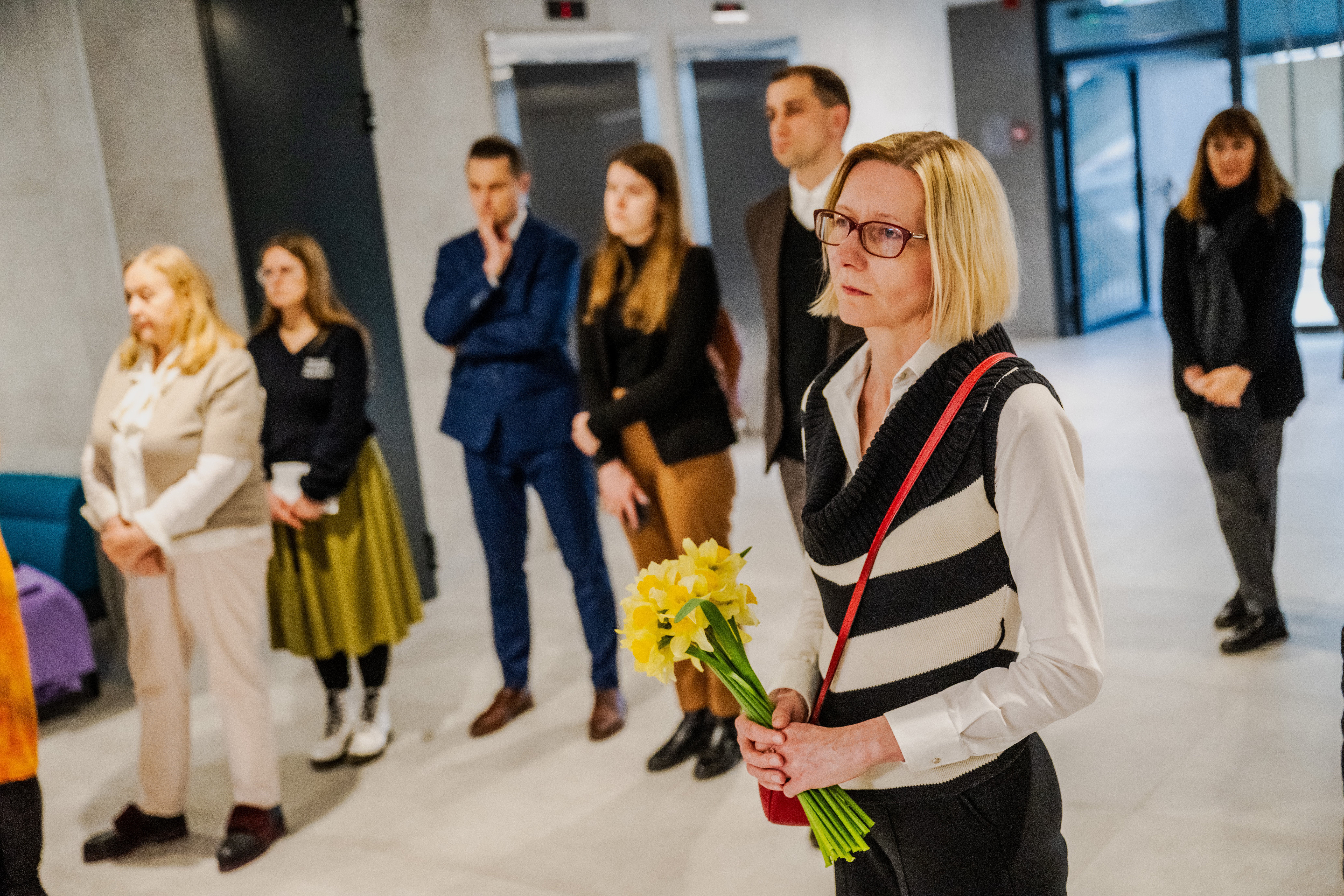Agnieszka Mazur-Olczak, Deputy Head of the Projects Department at the ENRS, in an interview about our travelling exhibition ‘Between Life and Death. Stories of Rescue During the Holocaust’.
What is ‘Between Life and Death’?
‘Between Life and Death’ is an exhibition that is very contemporary, despite discussing historical events. It tells the story of the dark and light sides of humanity, presenting accounts from individuals in various countries who found themselves in extreme situations. This includes those who had to save their own lives and those who, for various reasons, chose to take the risk and help them. What is most important to me is that as we travel the world with this project, I consistently hear that despite the exhibition recounting difficult war stories, it always conveys a sense of hope.
How did it all start?
It began with the European Commission, which wanted to organise a significant event on January 27, Holocaust Remembrance Day, in 2018. At the ENRS, we conceived the idea of creating an exhibition and reached out to the Polin Museum and the Silent Heroes Memorial Centre in Berlin. While developing the concept, we realised that no exhibition had ever presented both perspectives —the rescuer and the rescued— and that we could combine them. We believed that, through the European Network's partnerships and the vital involvement of the Polin Museum, we could find suitable partners. We sought institutions with interesting, documented stories that they were willing to share to promote their collections. We had very little time to prepare this exhibition; it was an intensive three-month effort involving two curators who created the content and a team of academic consultants. Despite the time pressure, everything came together thanks to our contacts and determination.
How did you choose the characters featured in the exhibition?
The selection process varied by country. We always consulted with our national partners regarding the stories we wanted to showcase. The exhibition is structured to display stories from individual countries, and each country has a national partner involved in the work. The authors either searched for characters on the Yad Vashem lists, or our partners recommended them based on their materials or knowledge of compelling stories. We also aimed to highlight lesser-known cases. For instance, instead of featuring the well-known Ulma family for the Polish panel, we chose the Gawrychs. Similarly, for the Dutch section, we did not present Anne Frank, as her story is widely known. It was also crucial that our partners had contact with the witnesses to history, so we could invite them to the exhibition openings.
Did you manage to meet the witnesses to history personally?
Yes. The first significant meeting was in 2018, during the exhibition's inauguration at the European Commission headquarters. Ms Elżbieta Ficowska, Ms Elisabeth Drillich, and Mr Shochot, a Lithuanian survivor, attended the opening. It was a deeply moving experience for both them and the audience. Whenever we present the exhibition, we strive to invite a person featured in the exhibition to the opening. I remember Ms Zita Kurz's profound emotion when she realised someone was interested in her story during the exhibition's debut in Bratislava. These meetings are incredibly poignant, transforming the stories from mere panels with photos into encounters with living individuals. Often, these stories seem destined for tragic endings, yet many of these individuals went on to lead significant lives.
Who is this exhibition for? Who visits it, and who would you recommend it to?
The exhibition attracts a diverse audience, depending on its location, but we always aim to engage young people. ‘Between Life and Death’ is not just about the past; it is very much about the present. Each country's panel begins by depicting the situation of Jews before the German occupation and how it changed. It illustrates how significant and tragic events can stem from seemingly small, insignificant laws. The lack of societal response—whether due to inability or unwillingness—led to the exclusion, deportation, and murder of this group. This is highly relevant today. Young people often say, ‘I'm not going to vote because I'm not interested in politics’ and this exhibition shows that you may not be interested in politics, but politics is always very much interested in you, and demonstrates that it profoundly affects everyone. This exhibition serves as both a warning and a powerful narrative, showing that even small actions can be crucial for someone's survival. We never know when we might find ourselves in such a situation.
‘Between Life and Death’ has already visited many countries, including Japan. You often accompany it. What can you say about its reception in different countries? Have you encountered any surprising reactions from visitors?
Regardless of the location, I consistently hear two praises. Firstly, visitors often expect an exhibition about humanity's dark side, but they leave feeling hopeful. Secondly, compliments frequently go to the graphic design studio that collaborated with us. The exhibition's design is not a simple set of boards; it is compact and adaptable to various spaces, always attracting attention. Visitors are naturally curious about their national panels and often learn something new. Young people, in particular, are motivated to explore similar stories or delve into their country's history and its contemporary implications.Where did the idea for a panel of diplomats included in the exhibition a few years later come from?
The idea for a panel dedicated to righteous diplomats originated from our Hungarian colleagues. Initially, the Hungarian contribution included a passage about a community of international diplomats who helped Jews in Budapest. However, our colleagues wanted their panel to mirror the others, showcasing both a rescuer and a survivor. I became interested in the Yad Vashem list, which is updated annually, and discovered Chiune Sugihara, a Japanese diplomat in Kaunas who helped Jews, including many from Poland. We decided to highlight diplomats as a special professional group with unique opportunities to help. This new panel, showing diplomats from different countries, emerged from this idea. Following its creation, the exhibition's trip to Japan was conceived. And just then, the pandemic broke out… Initially, it seemed a hindrance but allowed us to develop the project further. Although "Between Life and Death" couldn't travel around Europe, it went to Japan, where exhibitions were permitted. This break enabled us to create additional material, including a film about the diplomats and nine educational packages on the Holocaust available on our hi-story platform.
How did the exhibition's reception change, if at all, after Russia's attack on Ukraine? Do you see any differences?
Yes, there have been changes. This is especially evident at openings, where directors and political representatives frequently mention Ukraine's tragedy. Just before the full-scale invasion on 24 February 2022, we were preparing to take the exhibition to Dnipro, Lviv, and other locations in Ukraine. I recall a conversation with Professor Rydel just days before the war began; he emphasised the need to support Ukrainians by bringing the exhibition there. Although these plans are currently on hold, we hope they will be realised soon. We have an excellent Ukrainian panel and a committed Ukrainian partner who helped set it up and participated in the exhibition's 2018 opening in Brussels.
What is your favourite part of the exhibition?
My favourite part is the section on diplomats, as I was heavily involved in it. It is incredible that an interest in diplomacy and curiosity about a Japanese person who wanted to help some people led to a new narrative for the exhibition. Additionally, for the first time, the exhibition has been translated into the host country's language, because until then, there was only an English version. Nowadays we also have a Slovak version, which is travelling around Slovakia. I hope to see it translated into many more languages for broader tours. The Polish panel is also a favourite, particularly due to the enriching experiences with Mrs Elżbieta Ficowska, but I see the entire exhibition as a cohesive whole and I treat it a bit like my own child.
You must have had numerous adventures during the preparation and journey of the exhibition. Is there any event that particularly stands out?
I will always remember the first presentation at the European Commission headquarters, which included many high-ranking officials. Just before the event, Ms Marta Cygan brought us a poem by Mr Ficowski, "Both Your Mothers," written for Elżbieta Ficowska and translated into several languages. We distributed it to the interpreters at the event. At the end of the ceremony, after each survivor had shared their story, Ms Cygan read the poem. It was incredibly moving, with many leaving the room in tears, especially as the poem's subject, Elżbieta Ficowska, was present among us. At that moment, I realised the exhibition's profound importance and felt that all our efforts were worthwhile. Ever since then, the exhibition has continued to surprise and impact us in many ways.
What are your plans for the exhibition? Are you thinking about expanding it? What is the next country you plan to visit?
We are currently working on the Estonian panel. The Estonians expressed a desire to join the project and showcase their stories, so the exhibition will soon be displayed in Tallinn.




